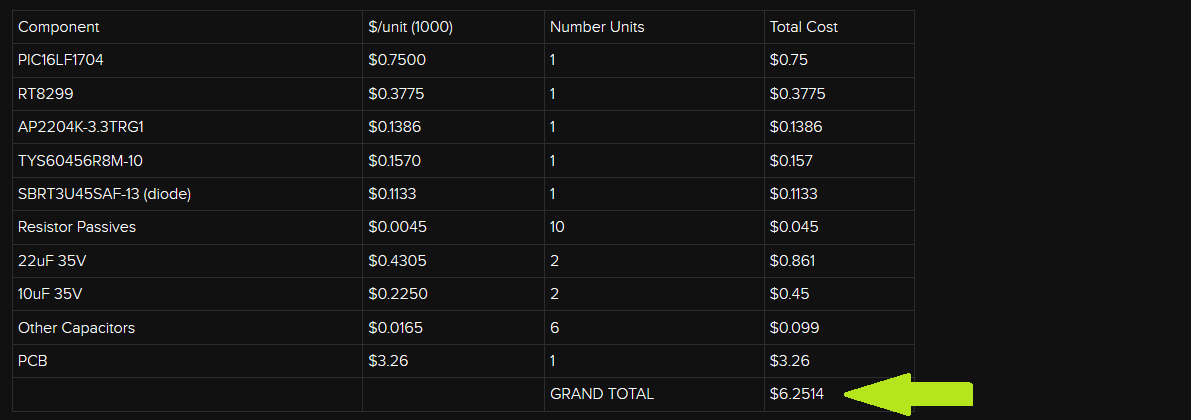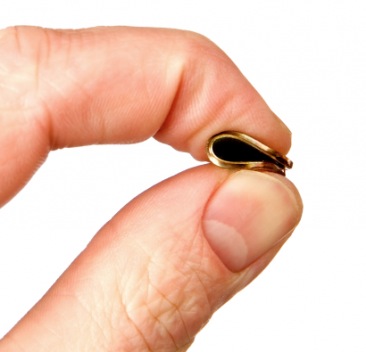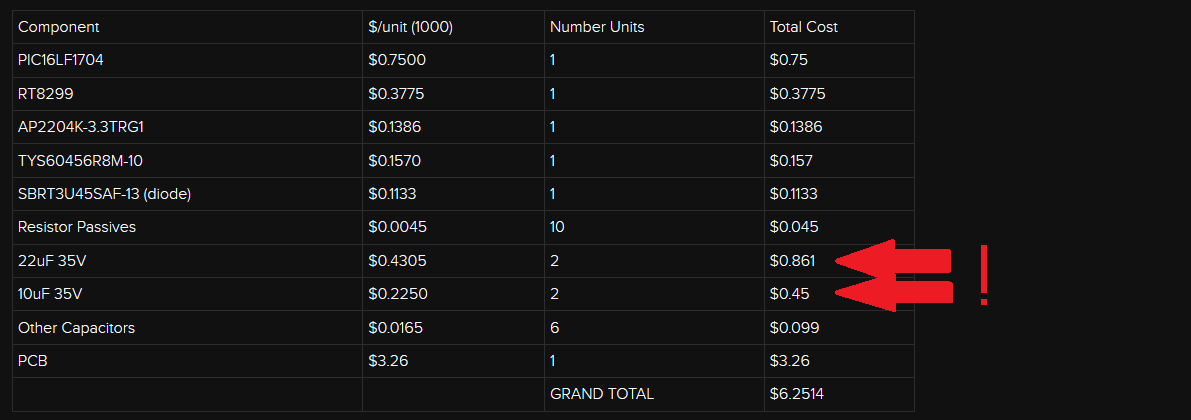According to my Bill of Materials (BOM) from my last project post, building up a board cost about $6.


I'm loosing a lot of money on capacitors: a whole $1.31! The truth is, those costs come from the high voltage requirements imposed on those caps to support the max 24V input. Or is it?

As for the input caps, I had a hunch I could do better than $0.22 a pop. It took a little bit more doing, but I found a 25V cap that just might do the trick: the GRM21BR61E106KA73. At $0.05 each, I save yet another $0.35. I could save even more money if I chose the 0805YD106KAT2A, but rated at 16V, that's not a limit I'm willing to impose (yet).
By just changing the capacitors, I saved a total $1.08! This brings down the total to just north of $5, so to get a $/W, you would only need a 5W panel.
There's still room for improvement. If I forgo the OpAmp integration offered by the PIC16LF1704 and replace it with an external OpAmp, I could surprisingly save some more cash. The PIC12F1571 has everything I need minus the OpAmp, but sells for *way* less than the PIC16LF1704, $0.41 vs. $0.75. An acceptable external OpAmp, such as the AZV321KTR-G1, run for $0.12 each. The grand total for MCU + OpAmp would be $0.53, a $0.22 savings. When you're counting pennies, this adds up to be quite a bit.
With all these savings combined, we're down to $4.9514.
Option two with the MCU is to use the PIC16F753 that I am reluctant to use in the first place. On the flip side, it has the integrated OpAmp and it removes the LDO. At $0.66 each, the total savings off the BOM would be $0.22, same as using the PIC12F1571 with external OpAmp.
Can I do better? Sure I can. If I'm willing to get a higher DCR inductor and a higher dropout LDO, I could save a little bit more. About a dollar or so.
Truth be told, the biggest cost sink is the PCB. I'm not sure how, but I've got to find a way to make it smaller. That will make the biggest impact. So for now I'll stay the course with the PIC16LF1704 (and apply the cost savings from the new capacitors) and try to cut costs on the PCB.
 Jonathan Bruneau
Jonathan Bruneau
Discussions
Become a Hackaday.io Member
Create an account to leave a comment. Already have an account? Log In.
You could safe some money on boards if you would order at other board companies like http://dirtypcbs.com/ If you can panelize them on 10x10 or 5x5 cm2 boards you could even safe some more money.
Are you sure? yes | no
Oh! I like the idea of panelizing! There's a lot of opportunities to cut cost that way.
I've already started looking at other PCB vendors. Preliminary results looked like about $0.90/PCB: a massive improvement. With panelizing, that should go down even more. That would make my day.
Are you sure? yes | no